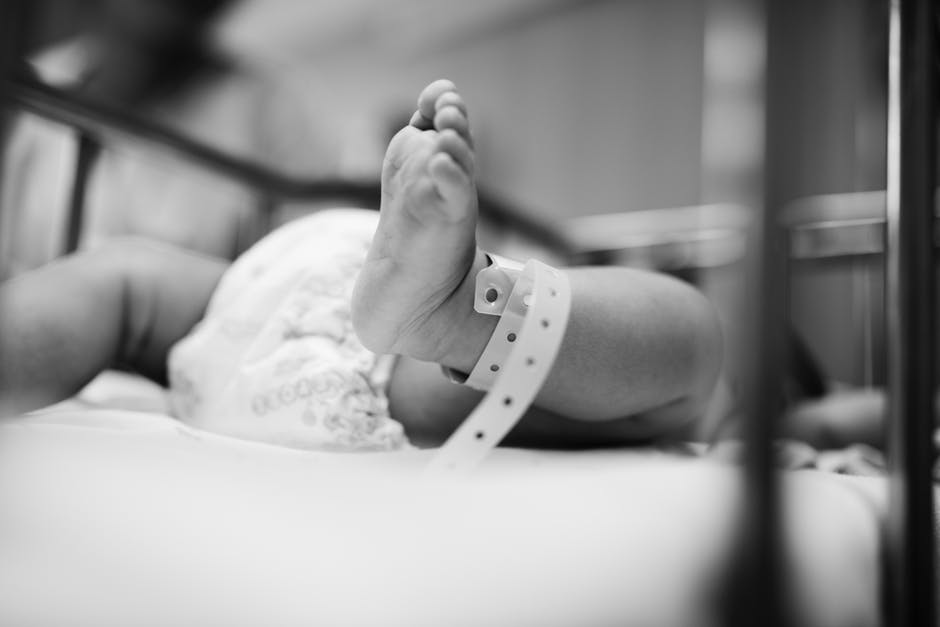Kernicterus vs Jaundice: Everything You Need To Know About This Preventable Birth Injury

Jaundice affects about 50-60% of full-term babies and 80% of premature babies in the United States. Left untreated, it could lead to a serious condition called kernicterus. You might be wondering what this preventable condition is.
Read on to discover what causes a kernicterus birth injury, plus the difference between it and jaundice.
Jaundice in Newborns
Jaundice is the yellow color of the skin and eyes in newborns.
This occurs when bilirubin builds up in the baby’s blood. While pregnant, the mother’s liver removes bilirubin from the baby. When your baby is born, their liver has to remove the bilirubin.
Bilirubin occurs when red blood cells break down naturally. Newborns normally have higher levels of bilirubin than adults since their red blood cells break down quicker, and their liver can’t keep up.
Signs
You’ll want to see the doctor that day if your baby’s skin is orange or yellow. Contact your doctor if your baby won’t wake up or fall asleep, and isn’t suckling or breastfeeding. Also, if your baby doesn’t have many dirty or wet diapers, that could be a sign as well.
You’ll want emergency help if:
- The baby has odd eye movements
- Has a stiff or limp body
- Is crying uncontrollably
- Their body is bent like a bow
Check to see if your baby has any of these signs and symptoms. Don’t delay, because jaundice can lead to a more serious condition known as kernicterus.
Risk Factors
Any newborn can be diagnosed with jaundice, but there’re certain risk factors to pay close to attention to:
- If your baby is born with bruises, they’re more likely to develop jaundice
- Baby’s sibling has/had jaundice
- Preterm babies
- Mediterranean or East Asian descent babies are more likely to develop jaundice
It’s important to catch jaundice early on to prevent kernicterus from occurring. It’s your doctor’s responsibility to catch it or that could lead to a birth injury.
Jaundice Diagnosis
If you’re concerned your baby might have jaundice, you can ask your doctor for a jaundice bilirubin test. Your doctor might use a light meter on your baby’s head that shows the transcutaneous bilirubin (TcB level).
Your doctor might also take a blood sample from your newborn’s heel. This test shows the total serum bilirubin (TSB level). If your baby’s blood level is high, treatment will be offered.
Treatment for Jaundice
There’s no reason a baby should have to suffer from kernicterus since jaundice is treatable. If your baby has high bilirubin levels they’ll be undressed and put under a special light that’s harmless to your baby.
For very high bilirubin levels, the baby will receive a blood exchange transfusion. The aim of treatment for jaundice is to bring the bilirubin levels in your baby’s blood back to a normal level.
It’s important to follow all after-care and appointments your doctor or nurse tells you to follow for your baby. Make sure your baby gets enough to eat to help keep your baby healthy.
Kernicterus in Newborns
If severe jaundice is left untreated it can lead to what’s called kernicterus.
Kernicterus is brain damage that occurs from too much bilirubin in the baby’s blood. Kernicterus can cause serious complications such as hearing loss or cerebral palsy.
Kernicterus can cause other problems as well, such as vision loss and learning disabilities.
Symptoms
Symptoms for kernicterus usually appear 1 week after birth and can include:
- Lethargy
- Seizures
- Eye weakness
- High-pitched crying
- Muscle spasms
If your baby experiences any of these symptoms, contact your doctor immediately.
Risk Factors
Your baby might be at risk of developing this condition if:
- They have a high level of bilirubin in their blood
- The bilirubin levels are rising quickly
- No treatment for jaundice was given
Treatment for Kernicterus
Treatment for kernicterus is reducing the bilirubin levels in the blood. It’s treated by either light therapy or plasma transfusion. The light therapy helps your baby’s liver remove bilirubin from the blood.
Your baby will be fed intravenously or through a tube during this process. The doctor won’t stop light therapy until your baby’s bilirubin levels are at a safe level. If light therapy isn’t working, your doctor may recommend a plasma transfusion.
During a plasma transfusion, the baby will slowly receive blood from a donor who doesn’t have bilirubin in their blood. They’ll test the blood to see the bilirubin levels, and if they’re still not at a safe level, the baby could receive another transfusion.
Kernicterus Prognosis
This condition is extremely dangerous and life-threatening.
The outcome for the baby depends on how quickly the condition is caught and when treatment is received. Unfortunately, even if caught early, your baby could still develop neurological effects.
Kernicterus Birth Injury
If a doctor fails to recognize signs of kernicterus or jaundice that could be considered medical negligence. It’s the responsibility of your doctors and nurses to notice the signs and symptoms of these conditions.
Failing to treat these conditions can have serious long-term side effects for your baby.
Next Steps
While jaundice can turn into a serious condition, it’s curable before turning into a kernicterus birth injury. If you think your baby has any of these signs, don’t delay. Bring your baby to their doctor today.
If your child suffered brain damage or any other complications due to kernicterus, contact us today for a free consultation. You might be able to file a legal claim and financial compensation could help pay for your child’s ongoing expenses.
